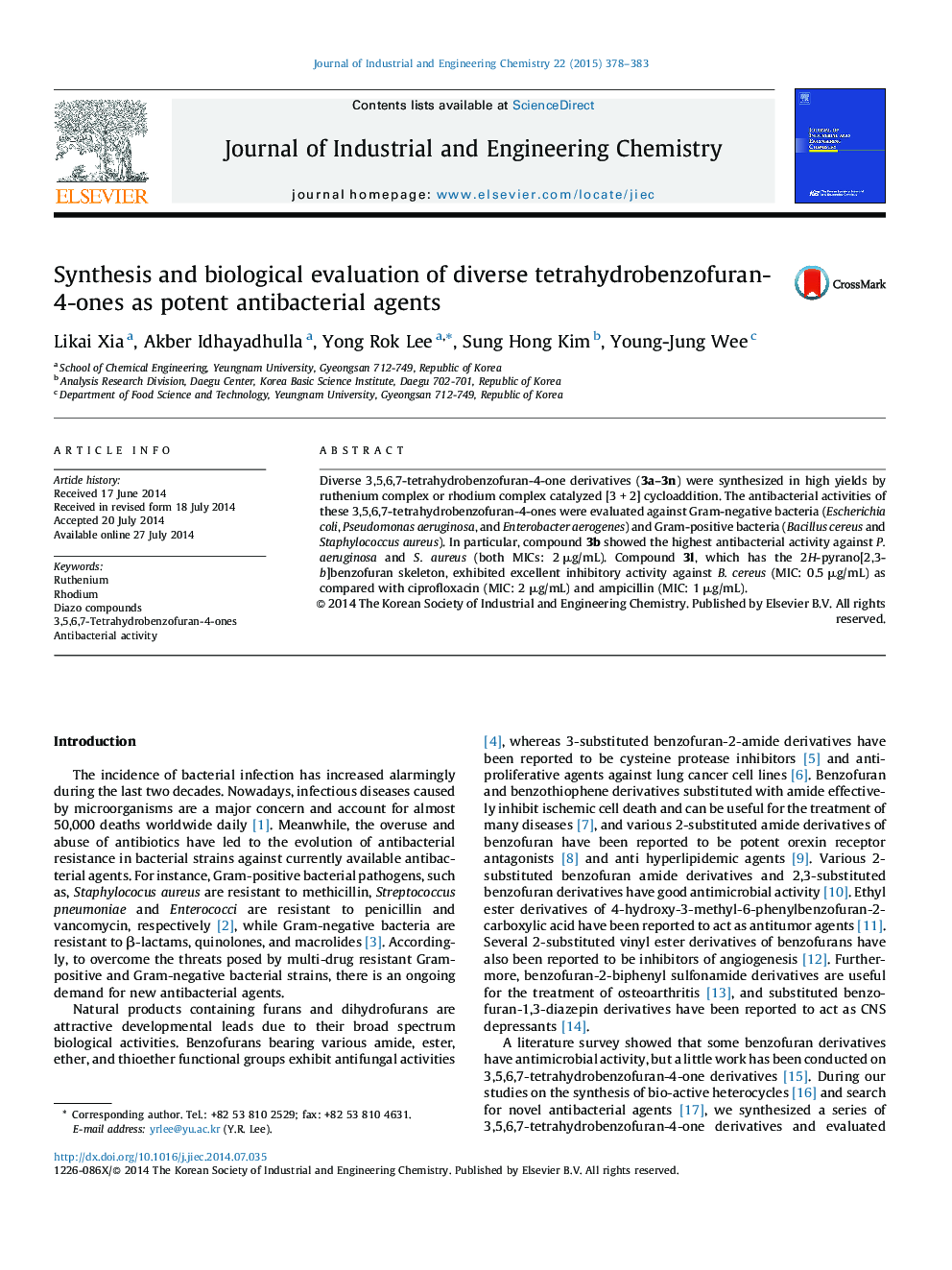| Article ID | Journal | Published Year | Pages | File Type |
|---|---|---|---|---|
| 228727 | Journal of Industrial and Engineering Chemistry | 2015 | 6 Pages |
Diverse 3,5,6,7-tetrahydrobenzofuran-4-one derivatives (3a–3n) were synthesized in high yields by ruthenium complex or rhodium complex catalyzed [3 + 2] cycloaddition. The antibacterial activities of these 3,5,6,7-tetrahydrobenzofuran-4-ones were evaluated against Gram-negative bacteria (Escherichia coli, Pseudomonas aeruginosa, and Enterobacter aerogenes) and Gram-positive bacteria (Bacillus cereus and Staphylococcus aureus). In particular, compound 3b showed the highest antibacterial activity against P. aeruginosa and S. aureus (both MICs: 2 μg/mL). Compound 3l, which has the 2H-pyrano[2,3-b]benzofuran skeleton, exhibited excellent inhibitory activity against B. cereus (MIC: 0.5 μg/mL) as compared with ciprofloxacin (MIC: 2 μg/mL) and ampicillin (MIC: 1 μg/mL).
Graphical abstractFigure optionsDownload full-size imageDownload as PowerPoint slide
